Asanas, or the physical side of yoga, focus on many, many things, including balance, strength, concentration, stability, breath and relaxation. They also focus on, and improve, flexibility. Here are 8 beginners’ yoga poses that increase flexibility.
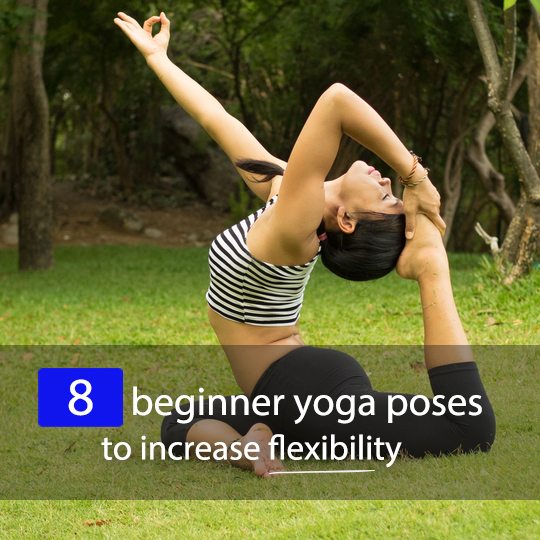
But Yoga Is For Flexible People, Right?
Myth: You have to be flexible to practice yoga. Reality: Yoga is for EVERY body.
You don’t have to be slim, flexible, strong or particularly coordinated to start yoga. In fact, when trying yoga out for the first time, people tend to either be naturally flexible or naturally strong. It is rare that someone trying it out for the first time would be able to hold crow pose for a long period of time and then twist themselves into a pretzel pose. Over time, a yoga practice develops and increases flexibility and strength.
Yoga is non-judgmental, non-competitive and never completely mastered. In other words, you will be a yoga student your whole life. There are always more levels, deeper poses and different ways of practicing yoga. And you will naturally continue to build upon your flexibility as you practice, as well as your strength, balance and concentration.
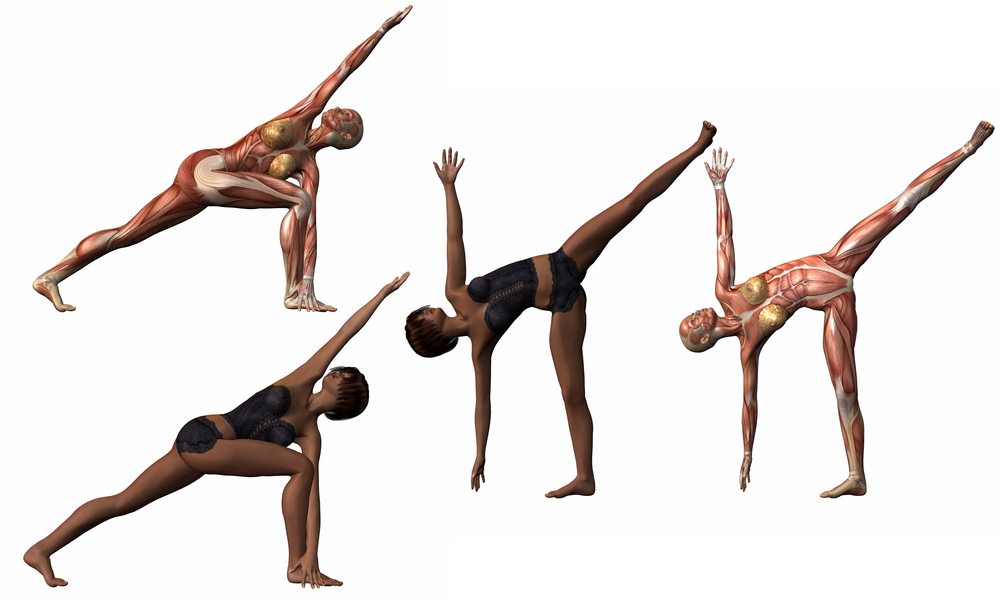
Yoga For Flexibility
These poses are great to practice on their own or as part of a sequence. Over time, they will help release tight muscles, benefit your nervous system, and increase flexibility.
Seated Twist
Even simply sitting cross-legged and twisting is a great start to building flexibility, if you are particularly stiff or inflexible. Twisting from the core stretches the back and spine, relieving stiffness in the body and even the hips if you are cross-legged.
Start in staff pose, sitting up straight with your legs crossed. Inhale and raise your arms above your head, lengthening your spine. As you exhale, twist from the core to the right, placing your left hand on your right knee and right hand behind you. Inhale and lengthen your spine a bit more, then exhale and twist a little deeper. Stay there for three breaths and then move back to neutral. Repeat on the other side. If sitting with your legs crossed is too difficult to begin with, you can straighten your legs and cross one over the other, twisting with your opposite elbow on the outside of your bend knee.
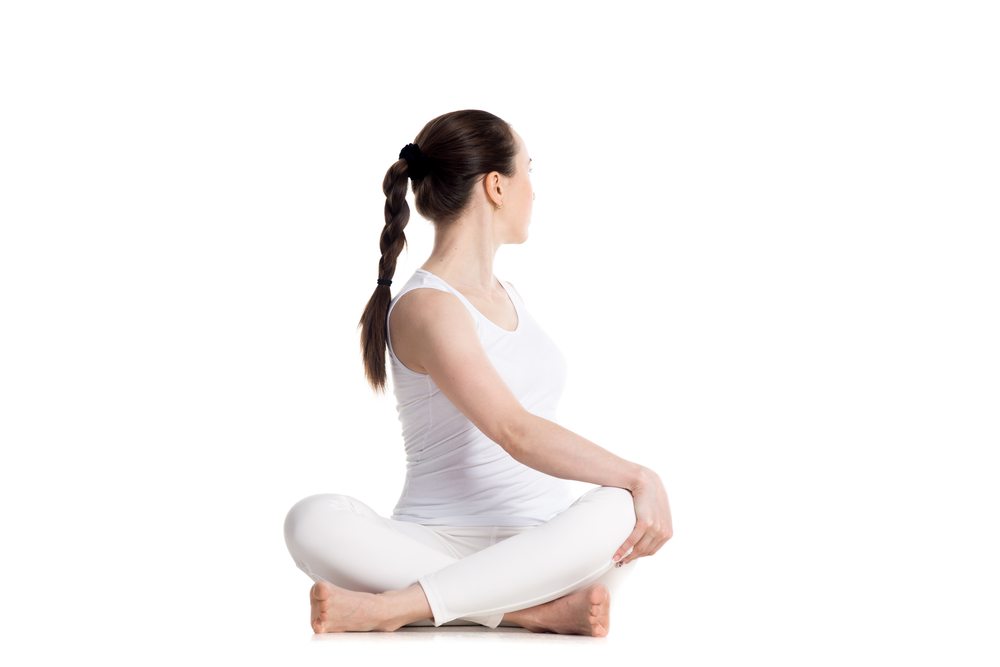
Bound Angle
If you have tight hips or are inflexible around the groin and inner thighs, then spending a bit of time in bound angle is a great way to release that whole area. This pose can be performed in three different ways – each with slightly different benefits. But all three options help with flexibility around that target area.
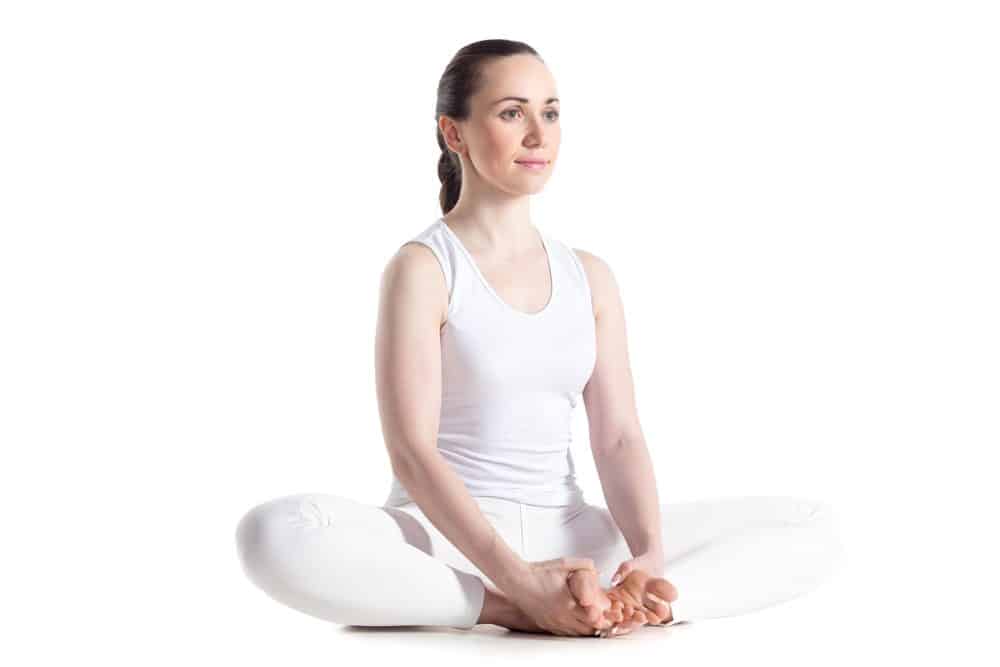
Start sitting up straight with your legs out in front of you, in staff pose again. Fold your knees out to open your hips, and place the soles of your feet together. Hold your ankles or clasp your fingers together around the outside of your feet. Bring your heels in as close to your groin as you can. Your legs should make a diamond shape. Make sure your back is straight, not curved. Start to gently flap your knees up and down like a butterfly to help release any tension you may be holding. You can also try swaying from side-to-side, gently pressing your elbow into your inner thigh to carefully encourage it closer to the ground.
If you can, move your chest towards the ground, leading with your heart to get a deeper stretch around the hips. Stretch your arms out in front and rest your forehead and chest over your feet and on the mat.

Reclined Bound Angle
For reclined bound angle pose, start by lying on your back with your knees bent. Slowly release your knees apart towards the ground and place the soles of your feet together. Make sure you’re not straining the insides of your thighs and groin. You can place blocks underneath your hips to reduce any extreme tension. Rest your hands either out to the sides with your palms facing up, or rest your hands on your belly. You can add a bolster under your spine to open your chest and rest here for as long as you like. This is a popular restorative pose.
Forward Bend
This is one of those go-to stretches that people think of when talking about flexibility. ‘I can’t do yoga – I can’t even touch my toes’, is a common statement heard by yoga teachers. The aim, however, is not to touch your toes. It is to stretch the muscles in the backs of your legs and release the spine. Whether that means your hands get as far as your thighs or down to the ground is irrelevant. Having said that, though, the more you practice, the closer you will get to the ground! The most important thing to remember here is not to force it. This is something that takes time and practice.
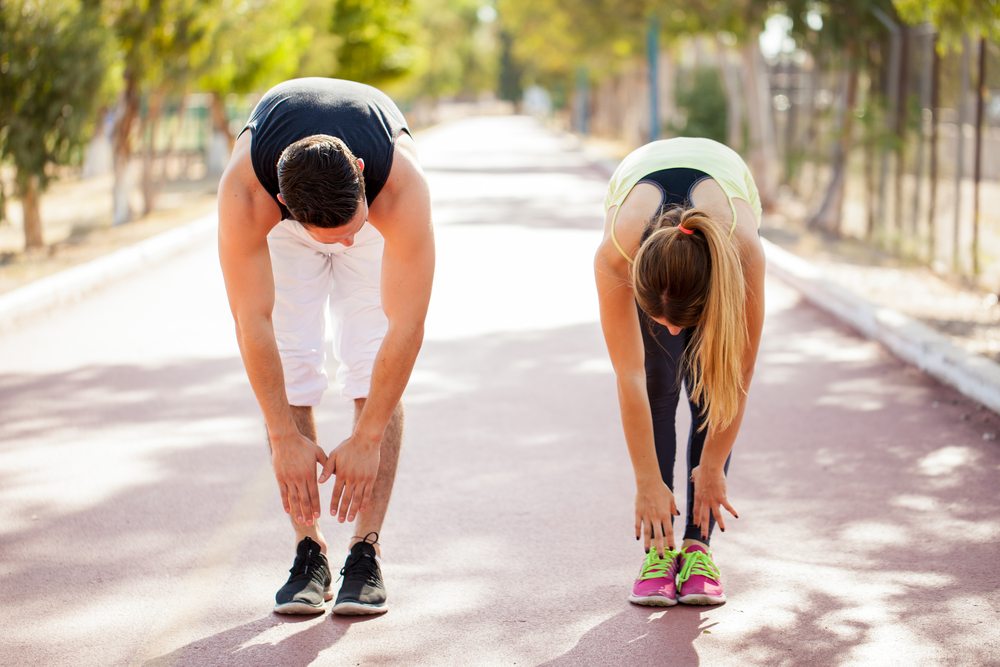
Forward bends can be done standing up or seated. If you are standing, start in mountain pose with your big toes touching and about an inch of space between your heels to slightly rotate your thighs inward. On an inhale, lift your arms up above your head, opening your chest and looking up. Make sure your knees are lifted and your core is engaged to protect your back. Release your shoulder blades down your back.
On an exhale, fold forward from your waist, leading with your chest, and keep your backs straight. Keep a bend in your knees if your legs are tight, and if you are comfortable enough to straighten them, make sure you still have a micro-bend in them (don’t lock the knee joints). Allow your spine and neck to lengthen, and release your head towards the floor. Your hands can rest on your thighs, shins, on the ground, around your ankles, or you can hug around the back of your knees. Stay here for five to 10 breaths.
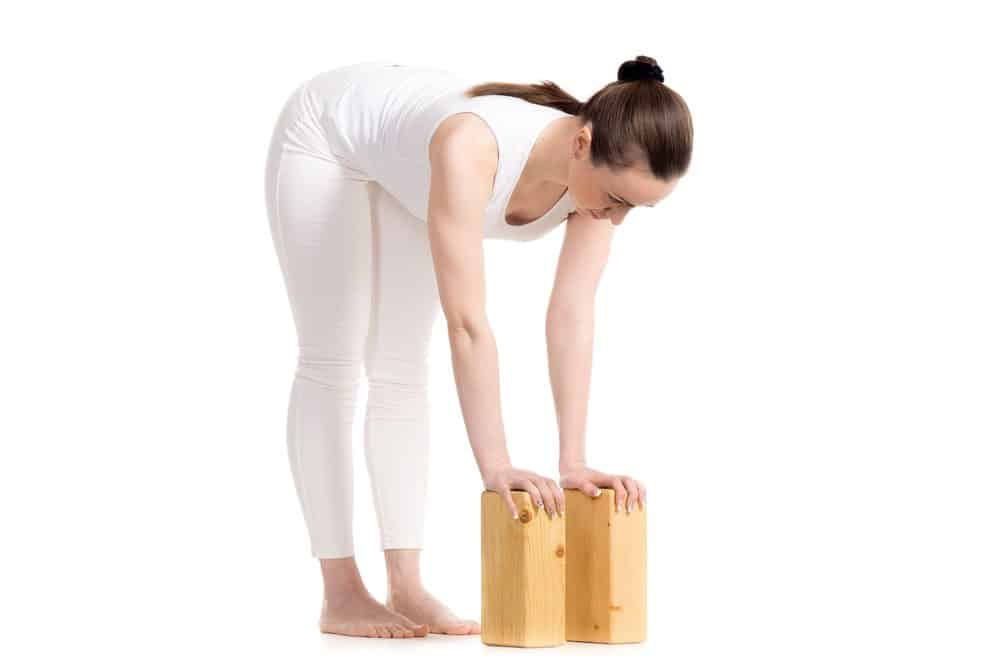
Seated Version
If you are practicing a seated forward bend, start in staff pose with your torso and back straight and your legs out in front of you. Point your toes to the sky, lengthening the backs of your legs. Inhale and open your chest, looking up. Lean forward on an exhale, leading with your chest again. Slide your hands along your legs. Either hold the bottoms of your feet, or rest your hands on your thighs or shins, releasing your head, and lengthening your spine and neck. This is where a yoga strap can come in handy. If you have one, loop it around your feet and walk your hands down the strap as you exhale. Hold the pose for five to 10 breaths.
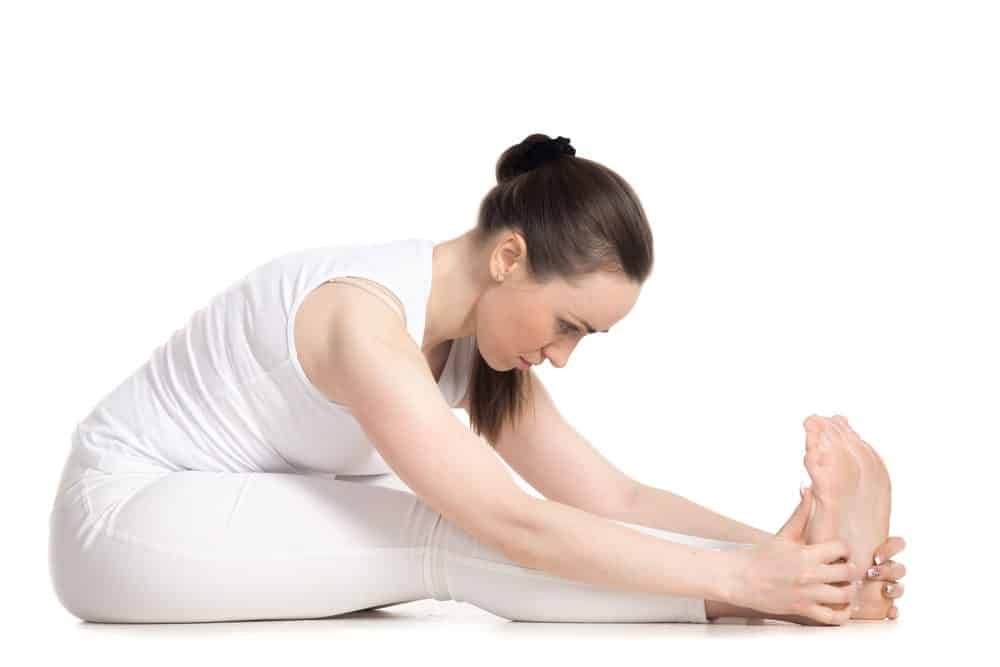
Wide-Legged Forward Fold
This one still stretches the backs of your legs and decompresses the spine, but it also works again on opening the hips and stretching the inner thighs and groin. Have a yoga block ready in front of you.
Start by standing with your legs wide in an upside-down ‘V’ shape. Slightly pigeon-toe your feet to internally rotate your thighs. Place your hands on your hips and life your collarbone and chest upwards to lengthen your torso on an inhale. As you exhale, slowly fold forward, keeping your core strong and engaged and your back straight, leading with your chest. Once you are halfway down, with a flat back, release your hands from your hips and place them either on the block in front of you, or directly on the mat if you can reach. Keep your core and back strong and on each exhale, try to fold a little deeper, moving the crown of your head towards the ground, releasing your spine.
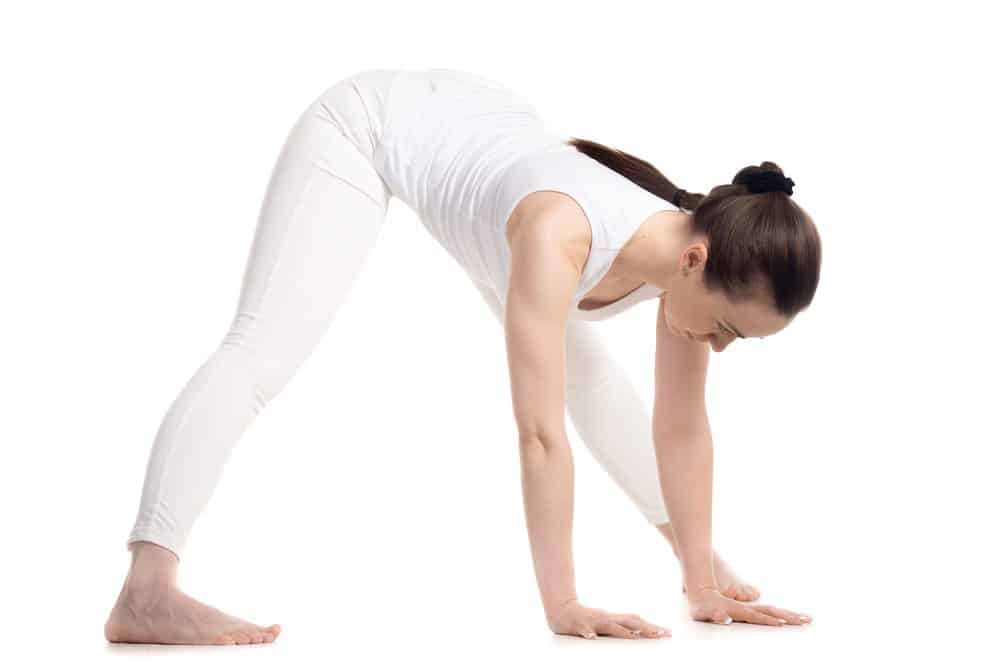
Camel Pose
Strengthening the muscles around your back and abdomen will support you as you stretch deeper and increase your flexibility. Camel pose is a fantastic back bend that works all those muscles along the spine, as well as your postural muscles. At the same time, it stretches your chest, abdominal muscles, pelvis, psoas and thighs. That makes it a particularly beneficial pose for increasing flexibility along the front of your body if you are particularly stiff or inflexible in any of those areas.
Start by kneeling on the floor with your knees hip-distance apart. Lift your buttocks away from your heels so that you are kneeling in an L-shape. Slightly rotate your thighs inwards and firm your glutes, but don’t engage them fully. Draw your pelvis slightly forward and lengthen your tailbone towards the ground so that you don’t collapse into your lower back when you move into the pose. Press your shins and feet into the floor and rest your hands on your lower back with your fingers pointing down. On an inhale, life your chest up and out, pressing your shoulder blades down your back ribs. Start to lean back, keeping your tailbone and shoulder blades firm. If this feels like enough of a stretch along the front of your body, you can hold the pose here.
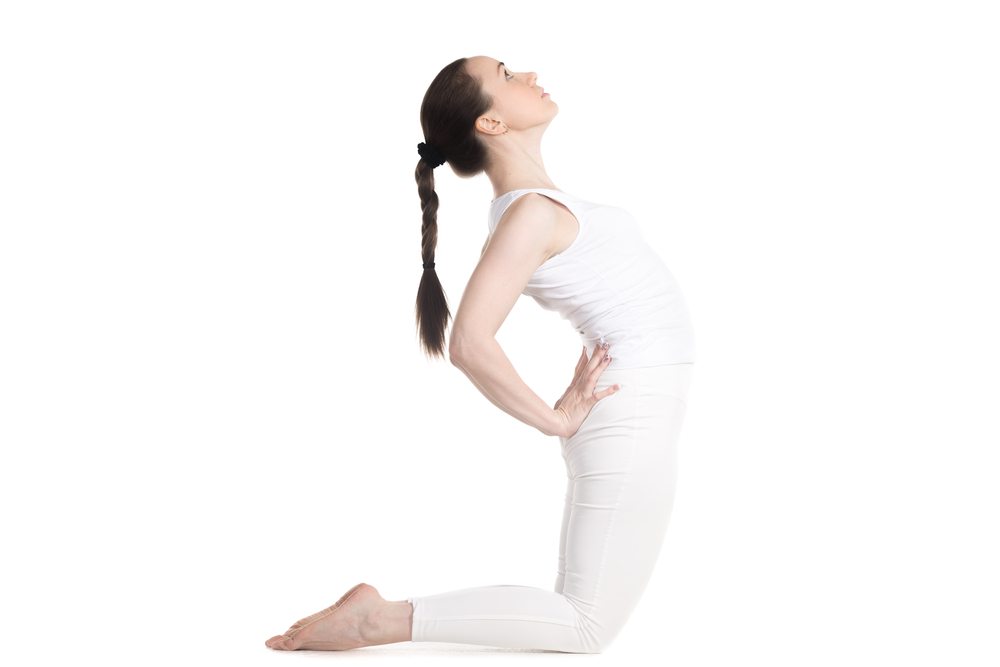
Work Towards…
Once you are a bit more flexible and experienced, you can move into full camel. To do this, carefully place your hands on your heels, one at a time, moving deeper into the back bend. Lift your pelvis out, increasing the back bend and stretching your thighs even more. Make sure you are not collapsing into your lower back. If that feels alright, you can release your head back, stretching along the throat. Hold for five breaths, and when you are ready to release the pose, firm your thighs and release one hand, rolling your head and body around the other side and lifting back up.
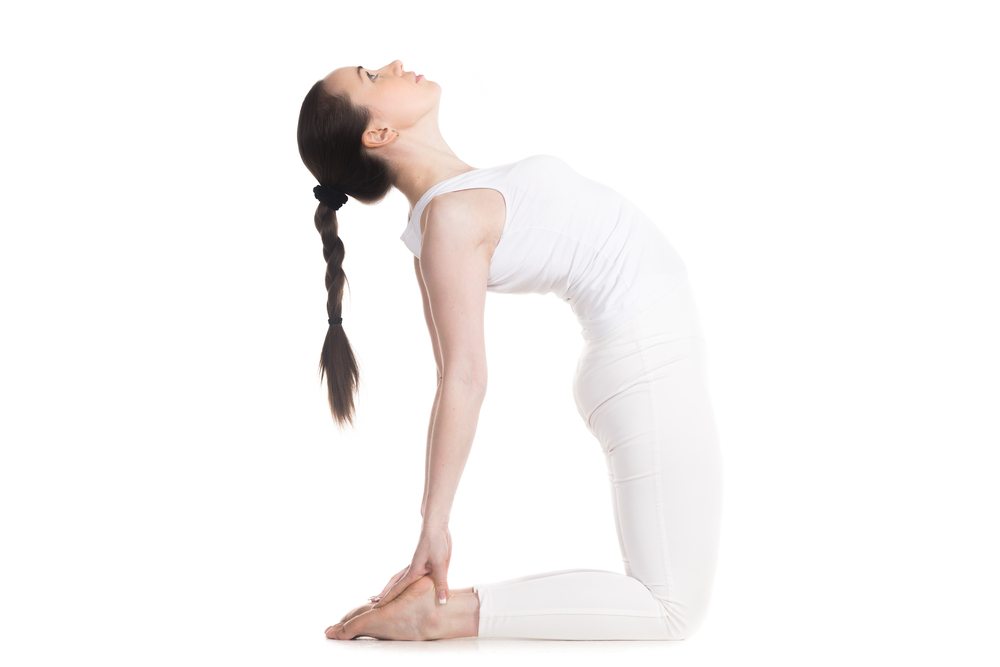
Child’s Pose
Child’s pose is a very restorative pose that is a great accompaniment to deep back bends like camel, because it releases the back and decompresses the spine. It is also a very restorative pose that is great for relieving the back and neck. At the same time, it can help increase flexibility around the knees, hips, groin and thighs.
Start in tabletop position with your wrists underneath your shoulders and knees underneath your hips. As you exhale, sit back onto your heels. Your torso should rest on your thighs, or in between them for wide-angle child’s pose. Make sure your arms are stretched out in front of you to create more space along the back and sides of your body. Rest your forehead on the mat. You should feel a nice stretch and release along your back and between your shoulder blades. Stay here for a few breaths, allowing yourself to relax into the pose. You can then send your arms backwards, either side of your body and relax your shoulders.

Bridge Pose
This gentle restorative pose is both a back bend and heart opener, and is also considered a minor inversion. This mix of opening the chest and heart cavity, as well as changing the direction of blood flow, calms anxiety and releases any stored emotions. It also helps you work on flexibility around your shoulders, chest, abdomen, psoas and thighs.
Lie on the floor with your knees bent and feet planted on the mat. Make sure your fingertips can brush your heels and your legs are hip-distance apart. As you exhale, press your feet into the ground and slowly lift your tailbone, lower back, middle back and upper back towards the ceiling. Tuck your shoulders towards each other underneath your back and clasp your hands together below your buttocks. You should feel open across the chest and strong in the back. Take long, slow breaths in this pose and watch your belly expanding with each inhale and contracting with each exhale.
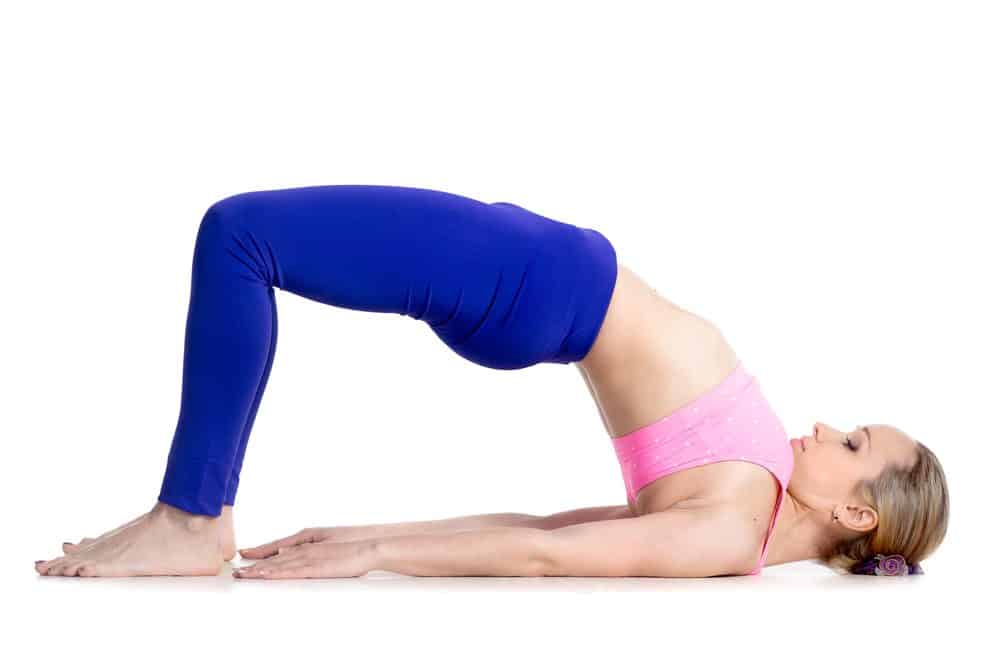
Universal Spinal Twist
This is a fantastic restorative pose that relaxes the body, stretches the hips, glutes and outer thighs, and releases the back. It’s great for releasing tension in the hips and back, as well as increasing flexibility in that area.
Start on your back and bend your right knee on an inhale. Open your arms out to either site, palms facing down. Gently drop your right knee to the left on an exhale, twisting from the hips and spine. Keep both shoulders on the mat and turn your gaze towards the right. You should feel a fairly deep stretch around your right hip and glute, and around your spine. At the same time, your chest should feel open. Stay in this restful pose for at least 10 breaths on each side.



